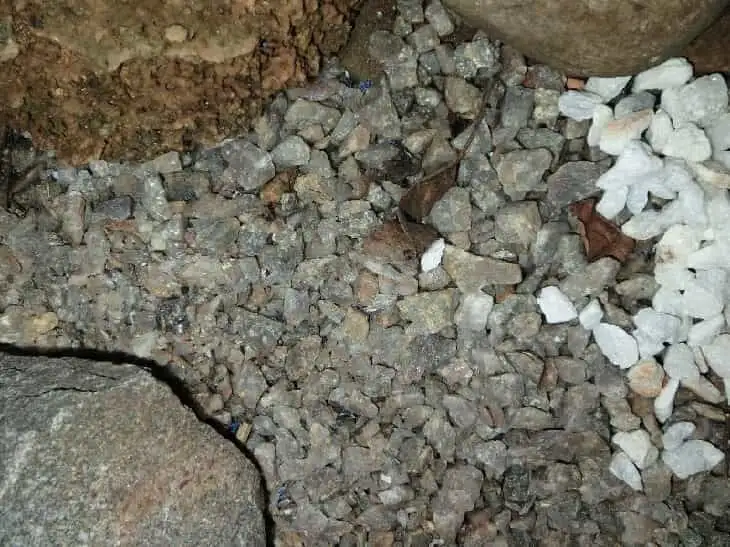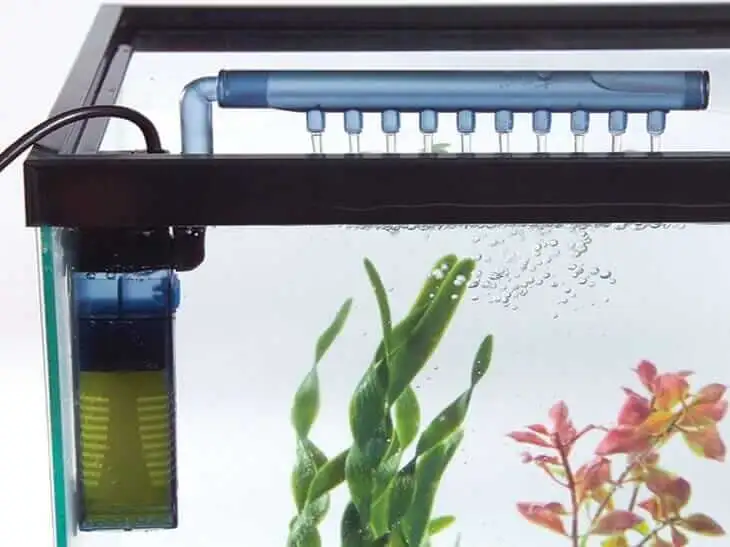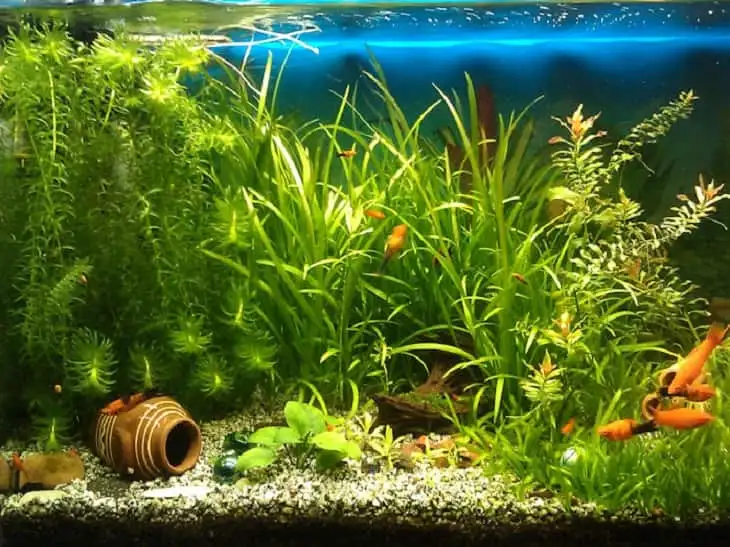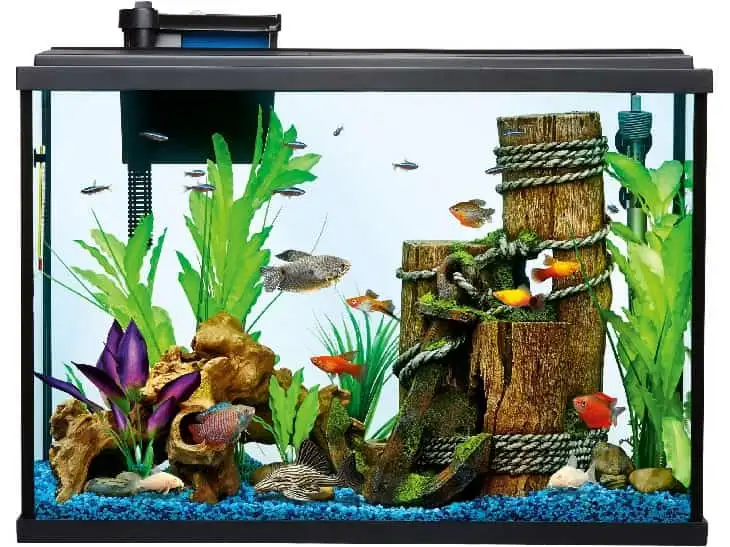AQUARIUM SAND VS. GRAVEL - WHICH SUBSTRATE TO CHOOSE

Continued, Part 2 (Beginning, Part 1)
Overview of aquarium gravel
Gravel is the most common type of aquarium substrate and the ideal substrate for most freshwater aquariums. If you choose gravel bottoms, you have a wide range of choices in size, colour and composition.
Gravel is usually made from crushed, smoothed and rounded rocks such as quartz or sandstone. The gravel may be almost as fine as sand, or it may be an accumulation of pebbles at the bottom of the aquarium.
Artificial aquarium gravel can be coated with a brightly coloured dye or paint and baked to prevent the paint from flaking off. The porous gravel is home to numerous micro-organisms, which participate in the nitrogen cycle and contribute to the aquarium's biological equilibrium.
Types of gravel
As with sand, there is no formal definition of aquarium gravel. Typically, gravel ranges from just over 2 mm to 2 cm in diameter, which is about the size of a dried pea.
Although you can buy gravel in bulk from construction companies, it is usually unsafe for use in aquariums. Such gravel can be contaminated with toxins or heavy metals and can poison your aquarium. For best results, stick to products made specifically for aquariums.
Here are the most common types of aquarium gravel and the advantages and disadvantages of each:
Live gravel. Similar to living sand, these gravels are supplied wet and contain bacteria and micro-organisms.
- Helps prevent new aquarium syndrome
- May contain nutrients that help aquariums thrive
- No rinsing is required before adding to the aquarium
- Suitable for most freshwater aquariums
- Generally more expensive than other options
- Limited range of sizes and colours
Natural/river gravel. As the name suggests, these are collected from river banks and dug out from gravel pits. They are cleaned and processed to approximately the same size and shape.
- Available in a wide range of natural colours and textures
- Allows water to pass through the substrate, preventing dead spots
- Suitable for most freshwater animals
- Chemically inert and does not affect water quality
- Allows healthy bacteria to spread throughout the substrate
- The porous surface may also promote blue-green algae, which is difficult to eliminate
Clay gravel. Another option for freshwater aquariums is to use a clay substrate rich in iron and minerals.
- Provides aquatic plants with nutrients required for their growth
- Allows water to circulate and healthy bacteria to thrive in the substrate, preventing dead zones
- Suitable for most freshwater organisms
- Clay is chemically stable and does not alter the chemical composition of the water
- More expensive than many other options
- Often very dusty and requires long rinsing before being added to the aquarium
- The porous surface can allow blue-green algae to spread.
Artificial gravel. These products are usually made from silica or industrial resin. They can also be made from natural gravel coated with an acrylic coating.
- A variety of colours and sizes to suit all tastes, including glow-in-the-dark
- Suitable for most freshwater animals
- Must be lightly rinsed before adding to the tank
- Chemically inert and does not alter the chemical composition of the water
- Smooth surface is not ideal for creating healthy bacteria
- Colours may fade or become dull over time.
Advantages of using gravel
Gravel is popular among freshwater aquarists for several reasons.
It is ideal for almost all freshwater fish and most invertebrates. Some digging species prefer sand, but most are well suited to gravel. Gravel is also an ideal choice for growing aquatic plants because it allows the roots to absorb nutrients from the water flowing through the substrate. Even if you don't choose a medium designed for specific plants, it is easier to maintain an aquarium with a gravel substrate rather than a sandy bottom.
Gravel aquariums stimulate the growth of bacterial colonies and other ammonia-feeding micro-organisms. This is desirable because they break down waste products and help maintain a healthy ecosystem in the aquarium.
With gravel substrate, you will have a wider range of filtration options as you can use either sub gravel or hanging / canister filters with your aquarium. Gravel does not clog the filter elements and is not sucked out by the vacuum hose. The last reason gravel substrates are more popular than sand in aquariums is that they better hide debris. Small food particles and other waste products that are excreted on the sandy bottom may be indistinguishable when they lie at the bottom of a gravelly aquarium.
Disadvantages of using gravel
There are not many disadvantages when using gravel in a freshwater aquarium. It is an ideal choice for community and aquarium plants.
The main trade-off is that these substrates make it difficult to eliminate toxic blue-green algae in case of an outbreak. Sandy substrates usually limit these outbreaks to the surface layer, as water cannot pass through fine sand particles.
On the contrary, gravel can allow algae to grow all over the substrate, which can be difficult to treat. This can be a more serious problem with porous types of gravel, but using a UV-sterilising filter can help prevent these algae outbreaks and other waterborne parasite problems.
Cleaning and care
A gravel aquarium is easier to care for than a sand aquarium. You can set the filter intake quite low because the gravel is too heavy to be sucked into the filter.
When changing the water, it is very easy to vacuum up the debris without picking up the gravel. Aquariums with gravel substrate look neater and are easier to maintain than their sandy counterparts.
Considerations for plants and animals
Gravel is the preferred substrate for many novice and experienced freshwater fish owners because it is very well suited for raising both aquatic animals and plants. There really are no restrictions on what you can do with a gravel freshwater aquarium.
Conclusion
Once you have started your new aquarium, changing the substrate in it is not easy. To avoid problems, choose a substrate that best suits the fish and plants you plan to keep in your dream aquarium!
If you're still not sure which option is best for your freshwater aquarium, here's our advice:
Use aquarium sand if:
- You prefer a sandy bottom
- You have a hanging filter or a canister filter
- You want to keep freshwater fish or invertebrates that like to bury themselves in the substrate
- Disregard the "dirty" appearance of the debris in the bottom of the aquarium
- Not too bothered by restrictions on aquatic plant growth
- Willing to spend more time keeping the sandy substrate clean
Use gravel if:
- You prefer a tidy aquarium look and like the look of gravel
- You want a thriving or densely planted aquarium
- You have a ground filter
- Would like a large variety of substrate sizes and colours to choose from
- Prefer the ease of maintenance of the gravel.








